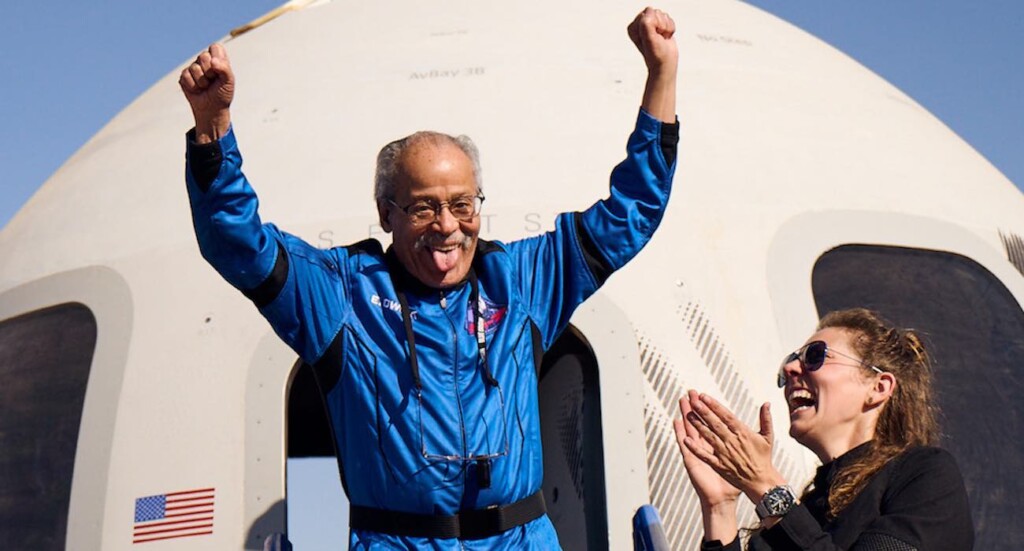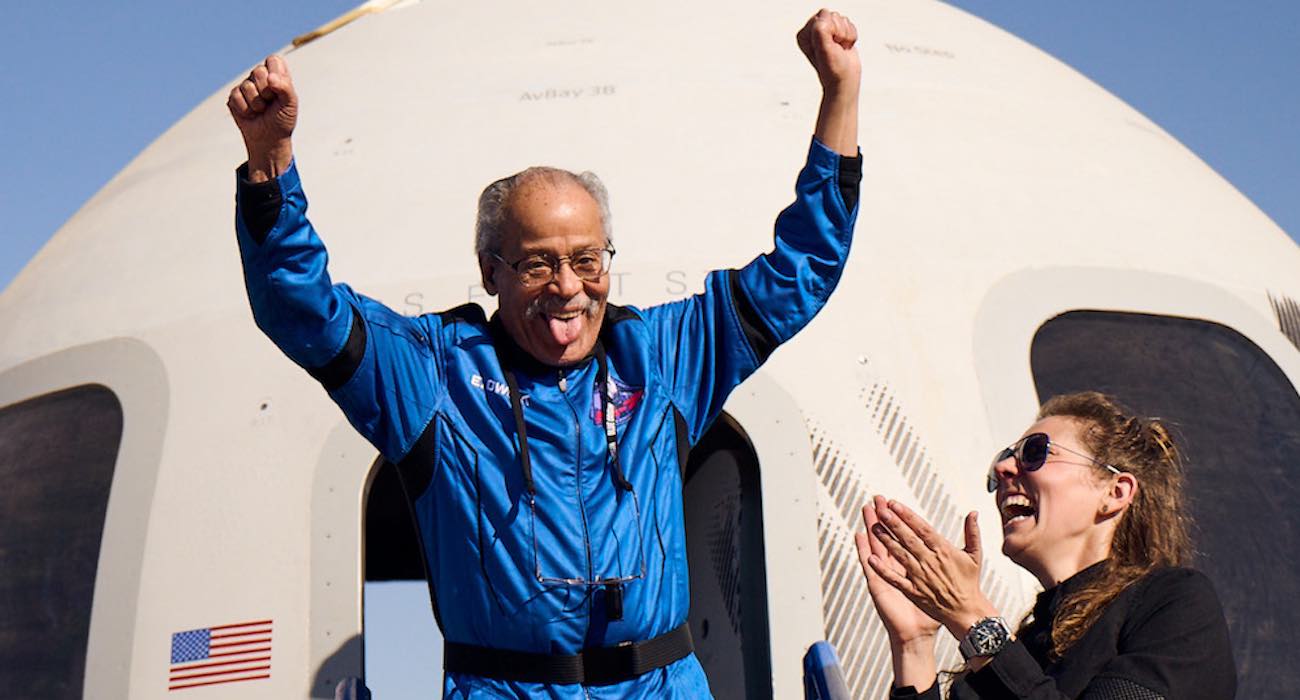
60 years after passing Air Force selection as a candidate to be the first African-American astronaut, Edward Dwight fulfilled that dream by blasting off with Blue Origin on Sunday for a short trip into space.
Riding aboard the New Shepherd rocket from Amazon founder Jeff Bezos’ private space company, Dwight flew into space for a 10-minute jaunt above the Kármán Line, the imaginary barrier that separates Earth’s atmosphere from outer space.
“Fantastic! A life-changing experience. Everyone needs to do this!” Dwight told NPR. “I didn’t know I needed this in my life, but now I need it in my life.”
Beating out Star Trek actor William Shatner to become the oldest person ever to enter space at 91 years of age, Dwight nearly fulfilled the ambitions and dreams of a generation of black Americans when, during the Kennedy Administration, it was announced that NASA was keen on sending a black man to space, and that Dwight was the best-trained candidate to do so.
Recalling those days to Smithsonian Magazine, Dwight said he used to get 1,500 pieces of mail a week, all addressed to ‘Astronaut Dwight, Kansas City.’ By then, he had spent 6 years quickly climbing through the Air Force’s ranks to become a captain while accruing 9,000 hours of flight time, 2,000 of which came in high-performance jets.
Holding an aeronautics degree from Arizona State University and enough flying hours to qualify for the flight test school at Edwards Air Force Base in the Mojave Desert, Dwight was one of 136 people who applied for NASA’s Astronaut Group 3, and one of 26 specifically recommended by the Air Force.
The Kennedy Administration, Air Force Chief of Staff Curtis LeMay, and others felt that a black astronaut would be a fantastic public relations and political demonstration of the country’s progress. By April 1961, the USA had already lost out to the Soviets in the race to put a man in space, but putting the first black man in space, they thought, would be maybe even more inspirational.
OTHER PRIVATE SPACE FLIGHT: Japanese Startup to Launch Public Space-Viewing Balloon Flights to Rival SpaceX
“Why don’t we put the first non-white man in space?” Edward R. Murrow, a former broadcast journalist who had become Kennedy’s director of the United States Information Agency, wrote to NASA administrator James Webb “…we could retell our whole space effort to the whole non-white world, which is most of it.”
Unfortunately, it wasn’t to be. Dwight wasn’t selected, but rather proceeded to have a long and prosperous career as an artist and sculptor until a group of deep pockets paid for his seat aboard the New Shepherd launch in honor of his service and inspiration to the country.
MORE INSPIRING AFRICAN AMERICANS: All-Black Climbing Team Makes History Reaching Top of Everest, Inspiring Diverse Adventurers
Feeling like now he has “bragging rights,” Dwight has no plans to stop pursuing the stars even at his advanced age. Compared to his training back at Edwards, he said the separation of the capsule from the rocket was “more dynamic” than he expected.
“I want to go into orbit. I want to go around the Earth and see the whole Earth. That’s what I want to do now,” he told NPR, which has a board member who helped pay for Dwight’s ticket.
SHARE This Man’s Long-Awaited Lift-Off With Your Friends On Social Media…




















